By Christopher Miskimon
Lyudmila Pavlichenko had not moved for more than 24 hours. She was a small, stout 25-year-old woman able to crawl on her belly for hours at a time. Lyudmila could go without food for days if necessary, could do any number of things an uninformed observer would never think her capable of performing. It all really was absolutely necessary; the young Pavlichenko was defending her Rodina, her country, from the scourge of Nazism. She was a sniper in the service of the Soviet Union.
Before the war Lyudmila was a history student with a great love of her subject, but she also spent much time at the shooting range and piloting gliders as part of the Soviet youth sports program. She was one year short of her degree when the war began, but she immediately volunteered for service. Recognizing her skill with a rifle, the Red Army sent her to its sniper school to learn the art of long-range marksmanship.
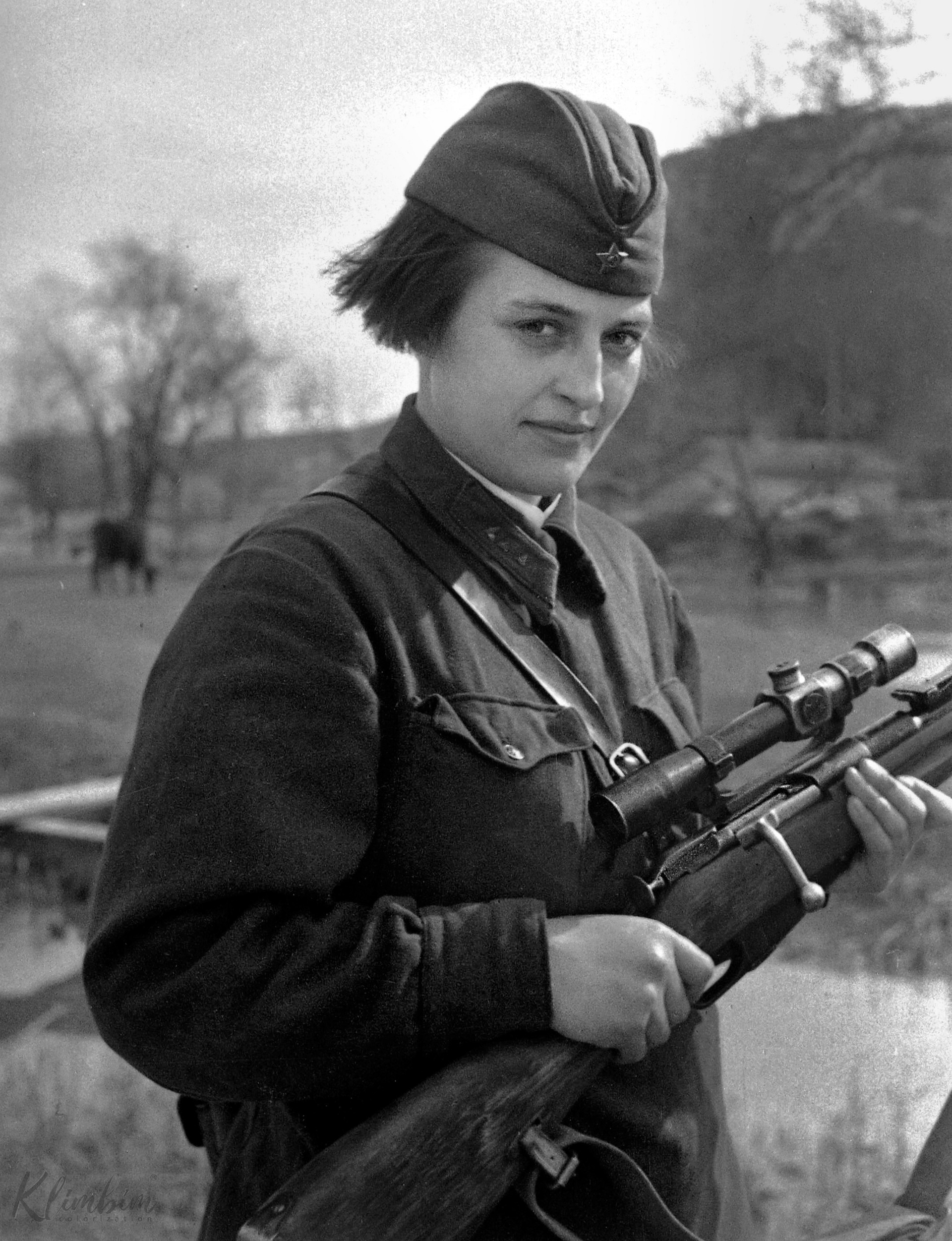
Moving forward to mid-1942, Lyudmila was lying still in the darkness outside the city of Sevastopol. A German sniper was nearby, and she was stalking him. She had lain still since the previous day; the enemy soldier was cautious and skilled. Taking him would require patience, but Lyudmila possessed patience in abundance. Dawn came, and with the rising sun opportunity arose as well. The German revealed his position. Lyudmila squeezed the trigger on her Mosin-Nagant rifle; the weapon’s report was sharp, and its stock slammed against her shoulder, a sensation to which she was accustomed. The German fell, dead from her bullet. The Soviet sniper could move now, and she made her way to her dead enemy, taking his rifle and his logbook. The book revealed he had been a sniper since the Battle of Dunkirk in 1940; he had killed more than 500 in his own time. Soon after, she was herself wounded, receiving a concussion. It was not the first time.
In August 1942, Lyudmila was sent to the United States as part of a Soviet delegation. Crowds of citizens and hordes of reporters swarmed her, eager to see the young woman who had killed 309 Germans. She quickly learned to respond to their questions with skill and attitude, laughing off their attempts to find out what sort of makeup she wore or what color underwear she preferred. Instead she made exhortations to step up the war effort and defeat the Nazis. She was even an overnight guest of Eleanor Roosevelt at the White House. It was a long way from Sevastopol.
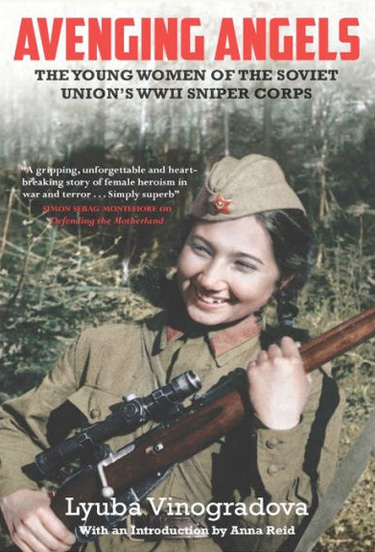 Lyudmila’s journey around the world was unusual for any Soviet citizen, even a sniper. Most of the Red Army’s female snipers spent the war enduring hardship and combat. Life in the Soviet Union was harsh in the best of times; during the war it became brutal for many. In line with the communist ethic of equality between the sexes, many women served in the military in various combat roles. Their snipers are among the most famous; many are aware women were employed in that role, but few know any of the details of their service. That lack of understanding is rectified in Avenging Angels: Young Women of the Soviet Union’s WWII Sniper Corps (Lyuba Vinogradova, translated by Arch Tait, MacLehose Press, New York, 2017, 299 pp., maps, photographs, notes, bibliography, index, $26.99, hardcover).
Lyudmila’s journey around the world was unusual for any Soviet citizen, even a sniper. Most of the Red Army’s female snipers spent the war enduring hardship and combat. Life in the Soviet Union was harsh in the best of times; during the war it became brutal for many. In line with the communist ethic of equality between the sexes, many women served in the military in various combat roles. Their snipers are among the most famous; many are aware women were employed in that role, but few know any of the details of their service. That lack of understanding is rectified in Avenging Angels: Young Women of the Soviet Union’s WWII Sniper Corps (Lyuba Vinogradova, translated by Arch Tait, MacLehose Press, New York, 2017, 299 pp., maps, photographs, notes, bibliography, index, $26.99, hardcover).
The women of the Soviet sniper corps were given a few short months of training and sent to the front. Many died before they could acquire the skills they needed to survive. Those who did live became deadly experts in the ending of human life, many of them killing hundreds of enemy soldiers. They proved themselves the equal of their male counterparts, who fought alongside them, sometimes harassed them, but often admired them. Like the men, they returned home after the war to the daunting task of rebuilding their shattered nation and their broken lives.
The author is a Russian scholar who has also written about female Soviet pilots and worked with renowned English writer Antony Beevor in his studies of the Eastern Front. Her skills as a researcher and writer show through in this work’s excellent detail and thorough storytelling. The translation work is equally impressive, showing none of the small errors common to such efforts and bringing across the emotion of the work. The descriptions of both combat and daily life combine with the stories of the female sniper to create a vivid and revealing book.
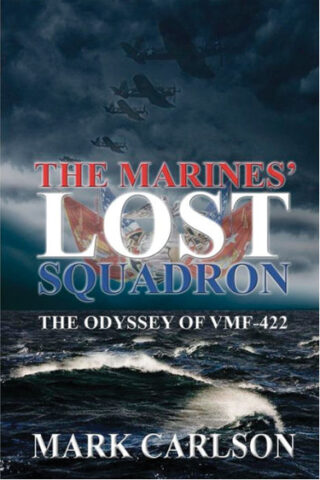 The Marines’ Lost Squadron—The Odyssey of VMF-422 (Mark Carlson, Sunbury Press, Mechanicsburg, PA, 2017, 400 pp., maps, photographs, bibliography, index, $19.95, softcover)
The Marines’ Lost Squadron—The Odyssey of VMF-422 (Mark Carlson, Sunbury Press, Mechanicsburg, PA, 2017, 400 pp., maps, photographs, bibliography, index, $19.95, softcover)
The early afternoon of January 25, 1944, was calm and sunny, a good day for flying over the Pacific Ocean. The men of Marine Fighter Squadron 422, the “Flying Buccaneers” were mostly new to flying; only three had combat experience while the rest were fresh from training. The squadron had taken off from Tarawa just a few hours earlier and was headed 800 miles southeast to the Funafuti Atoll with a refueling stop at Nanumea. The weather report predicted clear weather for flying, but tragically it was a day out of date. As the pilots flew on, they saw gray clouds ahead. It was a typhoon, 50,000 feet high and 100 miles wide. They thought it was only a rain squall and flew into it. Six pilots were lost, and 17 more rode out the storm in tiny rafts. For them, World War II stopped while they fought personal wars for survival.
This was the worst noncombat loss of a Marine fighter squadron in the entire war and became known as the “Flintlock Disaster.” For many years it was all but forgotten, superseded by wartime events. The author spent four years researching this disaster, assembling hundreds of pages of official documents and personal letters. The narrative flows easily, drawing the reader into this story of survival and hardship. It also contains numerous photographs, both official and personal from the participants.
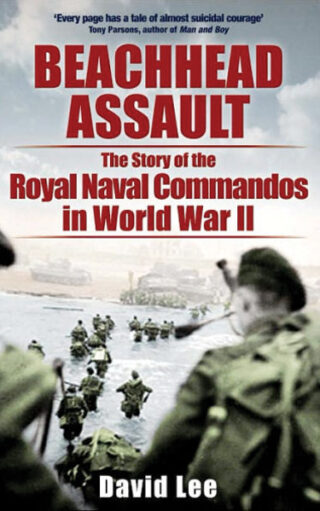 Beachhead Assault: The Story of the Royal Naval Commandos in World War II (David Lee, Frontline Books, South Yorkshire, UK, 2017, 270 pp., maps, photographs, appendices, bibliography, index, $24.95, softcover)
Beachhead Assault: The Story of the Royal Naval Commandos in World War II (David Lee, Frontline Books, South Yorkshire, UK, 2017, 270 pp., maps, photographs, appendices, bibliography, index, $24.95, softcover)
Able Seaman Ken Oakley, a member of F Commando, Royal Marines, manned an assault boat as it was lowered into the Mediterranean Sea off the Italian island of Sicily. A wave hit the tiny craft and swept away his unit’s mortar; then the boat hit the water and they were off toward shore. Ken hoped they would get to shore without being spotted, but when they were a mile out a flare lit the night. Soon machine-gun fire snapped overhead, and they replied with their Bren guns. Suddenly the boat hit the bottom and down went the door. Ken rushed past a panicked Marine lying on the deck and waded the 50 yards to shore. His section began setting up beacons to direct the following waves toward the right landing areas. Afterward he set off with another to find the beachmaster so they could coordinate their efforts with him. The man was nowhere to be found at the moment, so they started back. Suddenly sniper fire rang out, and they were forced to take cover. It was the beginning of what would prove a long day.
The Royal Marines were charged with readying and clearing the beaches during amphibious assaults. This book shows how they carried out their duties, usually under fire. It is full of first-hand accounts and anecdotes that provide the perspective of the men in their own words. This includes their training and combat experiences.
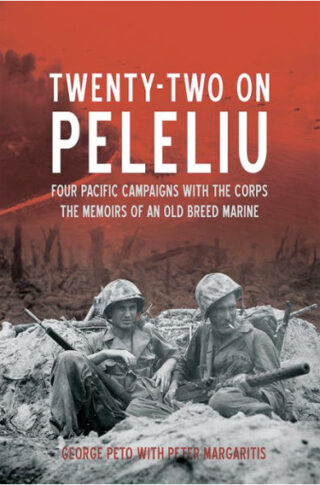 Twenty-Two on Peleliu: Four Pacific Campaigns with the Corps, the Memoirs of an Old Breed Marine (George Peto with Peter Margaritis, Casemate Publishers, Havertown, PA, 2017, 368 pp., maps, photographs, bibliography, index, $32.95, hardcover)
Twenty-Two on Peleliu: Four Pacific Campaigns with the Corps, the Memoirs of an Old Breed Marine (George Peto with Peter Margaritis, Casemate Publishers, Havertown, PA, 2017, 368 pp., maps, photographs, bibliography, index, $32.95, hardcover)
Young George Peto was a restless youth. He left home in Ohio after a fight with his alcoholic father; eventually he enlisted in the Marine Corps in 1941. After boot camp, he wound up in the 1st Marines, entering combat at Finschhaven in New Guinea before going on to Cape Gloucester. Working as a forward observer, he next went ashore at Peleliu, where the regiment fought for a week before being relieved due to the enormous casualties it sustained. After a six-month reprieve, Peto landed on Okinawa where the Japanese did not oppose the initial landings but instead allowed the Americans to get inland before engaging them heavily. As casualties mounted over the following months, he put his skills as a forward observer to good use, calling in artillery strikes and working with spotter planes to rain ruin upon the stubbornly defending Japanese. After the war Peto went back home and built a life, staying active in veteran’s groups and teaching schoolchildren about his experiences.
This autobiography is a fascinating, down-to-earth look at an average working-class American’s experience in mankind’s greatest conflict. The author’s engaging prose keeps the reader’s interest whether describing combat or the mundane occurrences of camp life. This work rivals the more famous books from Marines such as Eugene Sledge and Robert Leckie in quality and readability.
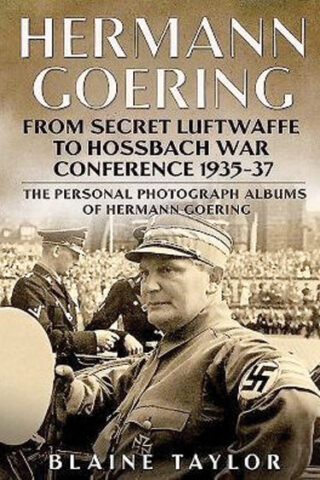 Hermann Goering: From Secret Luftwaffe to Hossbach War Conference 1935-37, the Personal Photograph Albums of Hermann Goering (Blaine Taylor, Casemate Publishing, Havertown, PA, 2017, 272 pp., photographs, bibliography, $40.00, hardcover)
Hermann Goering: From Secret Luftwaffe to Hossbach War Conference 1935-37, the Personal Photograph Albums of Hermann Goering (Blaine Taylor, Casemate Publishing, Havertown, PA, 2017, 272 pp., photographs, bibliography, $40.00, hardcover)
Hermann Goering was a busy man in the mid-1930s. In March 1935, his beloved air force, the Luftwaffe, was unveiled to a shocked world. The following month he married his second wife, Emmy Sonneman, in an enormous ceremony. A year later his Luftwaffe assisted in the reoccupation of the Rhineland while the Western powers stood idly by. As the number two man in the Nazi hierarchy, Goering was involved in almost every aspect of government during the period. He headed the Four Year Plan for the economy at the end of 1936 and in January 1937 made a state visit to Italy to build the alliance with the Fascist country. That November he hosted an enormous hunting exhibition in Berlin before attending the infamous Hossbach Conference, where Hitler secretly announced his intent to go to war with the Soviet Union by 1943 to create the German empire he craved.
All these events were captured in images, the personal photographs of Goering in the lead-up to World War II. This volume collects almost 300 of them, showing the Third Reich at work and leisure. Many of the photos are in the grandiose style of the Nazis, replete with flags, soldiers, and weapons. Others are surprisingly mundane, the sort of snapshots anyone might have, showing that the road to hell was not all monuments and somber ceremonies. The author also collects a number of writings about Göring from the period to accompany the imagery, providing added detail.
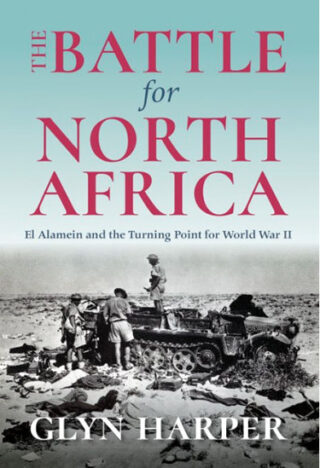 The Battle for North Africa: El Alamein and the Turning Point for World War II (Glyn Harper, Indiana University Press, Bloomington, 2017, 264 pp., maps, notes, bibliography, $29.00, hardcover)
The Battle for North Africa: El Alamein and the Turning Point for World War II (Glyn Harper, Indiana University Press, Bloomington, 2017, 264 pp., maps, notes, bibliography, $29.00, hardcover)
Lieutenant General Bernard Montgomery went to bed early on the night of October 23, 1942. He wanted to be fresh for the attack the next morning, so he could make good decisions and appear solid to his troops. He advised the commander of XXX Corps, Sir Oliver Leese, to do the same. Leese thought it good advice but ignored it so he could watch the opening barrage at 9:40. Despite his statements, Montgomery did the same, recording the moment in his diary: “…a wonderful sight, similar to a Great War 1914/18 attack. It was still night and very quiet. Suddenly the whole front burst into fire, it was beautifully timed and the effect was terrific, many large fires broke out in enemy gun areas.”
It was the beginning of one of World War II’s turning point battles. The Axis advance across North Africa was definitively stopped when the Allies went on the offensive at the point where they had held Rommel’s forces months earlier. This new study of the battle investigates the challenges of coalition warfare, the critical role of intelligence, and the developing use of combined arms warfare in British operations. It clearly lays out the reasons for the Allied victory.
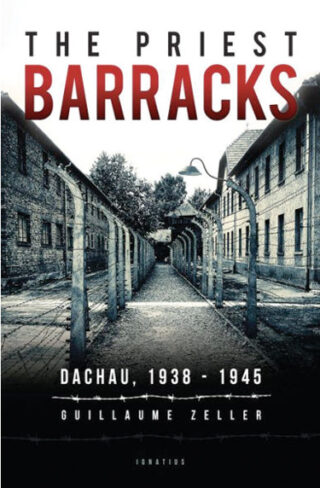 The Priest Barracks: Dachau 1938-1945 (Guillaume Zeller, Ignatius Press, San Francisco, CA, 2017, 274 pp., maps, appendices, bibliography, index, $16.95, softcover)
The Priest Barracks: Dachau 1938-1945 (Guillaume Zeller, Ignatius Press, San Francisco, CA, 2017, 274 pp., maps, appendices, bibliography, index, $16.95, softcover)
Millions of human beings suffered during the Holocaust, persecuted for who they were or what they stood for. The Nazis imprisoned any who resisted their advance in camps where death seemed the only release. At the infamous Dachau concentration camp, three buildings in the prisoner barracks were occupied solely by Catholic priests, 2,579 of them. More than a third of these men would die of disease and abuse. This is a story of both the great suffering these priests endured and the tremendous sacrifices they made for each other during their captivity. Upon arrival at Dachau they were summarily stripped of their vestments and religious accoutrements and even their clothing, leaving them naked. They were shaved, forced to shower in freezing water, and given ill-fitting clothes to wear and wooden shoes that fell off if the wearer did not curl his toes constantly. This was just an introduction to what they would experience. Yet, through it all, they maintained their faith in God and each other.
The persecution of Catholic priests as part of the Holocaust is known, but relatively few works have concentrated on their hellish time in the camps. This new work helps correct that imbalance by focusing on the Dachau camp and the thousands of priests held there. It is thoroughly researched and full of small, individual tales of courage and perseverance that keep the reader turning the page.
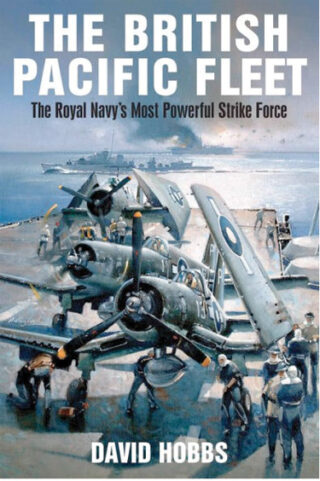 The British Pacific Fleet: The Royal Navy’s Most Powerful Strike Force (David Hobbs, Seaforth Publishing, South Yorkshire, UK, 2017, 462 pp., maps, photographs, appendices, notes, bibliography, index, $28.95, softcover)
The British Pacific Fleet: The Royal Navy’s Most Powerful Strike Force (David Hobbs, Seaforth Publishing, South Yorkshire, UK, 2017, 462 pp., maps, photographs, appendices, notes, bibliography, index, $28.95, softcover)
Great Britain had no fleet in the Pacific Ocean in August 1944. The nation was nearing exhaustion after five years of war on multiple fronts, but Britain was not done yet. Within six months it assembled a naval force so powerful it could confidently launch air strikes against Japanese territory. Six months after that, with the war coming to its bitter end, the British Pacific Fleet was the most powerful combat force the Royal Navy had ever amassed, capable of fighting alongside its American cousins with equal skill and ability. The fleet bore its share against the kamikazes and launched daring attacks on the Japanese mainland.
The story of this fighting force has never received the attention it truly deserves; this new volume redresses that imbalance. The author is a former Royal Navy officer and was also curator of the Fleet Air Arm Museum; his expertise on the British carrier force is clear and useful in this work since carriers were the centerpiece of the Pacific Fleet. He also effectively uses reports written by U.S. Navy liaison officers to show how the two nations worked together in pursuit of their common goals. A number of detailed appendices add to the impressive scope of the book.
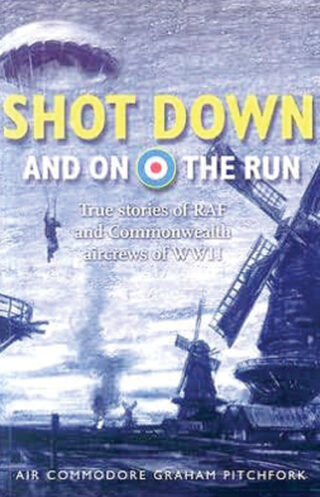 Shot Down and On the Run: True Stories of RAF and Commonwealth Aircrews of World War II (Air Commodore Graham Pitchfork, Osprey Publishing, Oxford, UK, 2017, 258 pp., photographs, appendix, bibliography, index, $15.00, softcover)
Shot Down and On the Run: True Stories of RAF and Commonwealth Aircrews of World War II (Air Commodore Graham Pitchfork, Osprey Publishing, Oxford, UK, 2017, 258 pp., photographs, appendix, bibliography, index, $15.00, softcover)
The Allied air campaigns over Europe, Asia, and the Middle East inflicted terrible casualties in both men and machines. Many of the aircrews died with their planes, and the survivors faced extreme hardship if captured. For those who managed to avoid capture, escape was a supreme challenge. They were often injured and experienced deprivation as they tried to elude the German military. Along the way they would receive acts of kindness and assistance from local citizens in occupied nations, who took great risks to help the downed airmen on their long journey to freedom.
This new book includes not only stories of the aircrews but goes into detail about the escape tools and techniques the flyers used, as well as the vast intelligence and resistance networks that supported them as they tried to return. The book is divided into sections, each covering a theater of the war. The escape tales are engaging and informative, revealing to the reader the ingenuity and skill the aircrews used to attain their freedom.
New and Noteworthy
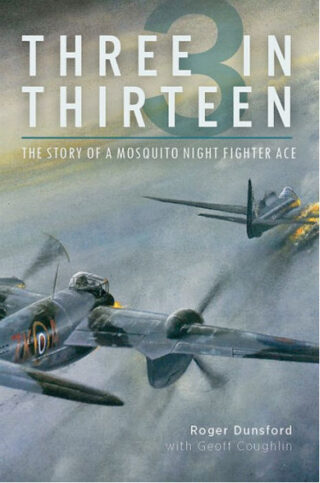 Three in Thirteen: The Story of a Mosquito Fighter Ace (Roger Dunsford, Casemate Publishers, 2017, $32.95, hardcover) Joe Singleton was a pilot in the Mosquito, a capable night fighter. This memoir of his service includes shooting down three planes in 13 minutes.
Three in Thirteen: The Story of a Mosquito Fighter Ace (Roger Dunsford, Casemate Publishers, 2017, $32.95, hardcover) Joe Singleton was a pilot in the Mosquito, a capable night fighter. This memoir of his service includes shooting down three planes in 13 minutes.
Flying Against Fate: Superstition and Allied Aircrews in World War II (S.P. Mackenzie, University of Kansas Press, 2017, $29.95, hardcover) Allied aircrews suffered a high casualty rate. This study looks at the talismans, rituals, and superstitions they used to deal with the stresses of combat.
The Last 100 Days: FDR at War and at Peace (David B. Woolner, Basic Books, 2017, $32.00, hardcover) Roosevelt’s last days in office were full of momentous occasions. As the war wound down, however, so did the president.
A Crime in the Family: A World War II Secret Buried in Silence—And My Search for the Truth (Sacha Batthyany, Da Capo Press, 2017, $28.00, hardcover) The author’s aunt, a German countess, took part in a massacre of Jews in the last days of the war. This is his investigation into the event and its consequences.
Hell to Pay: Operation Downfall and the Invasion of Japan, 1945-1947 (D.M. Giangreco, Naval Institute Press, 2017, $35.00, hardcover) A veritable hell awaited both the American invaders and Japanese defenders if this invasion had occurred. The author has gathered thousands of sources to create a vision of what the operation might have been.
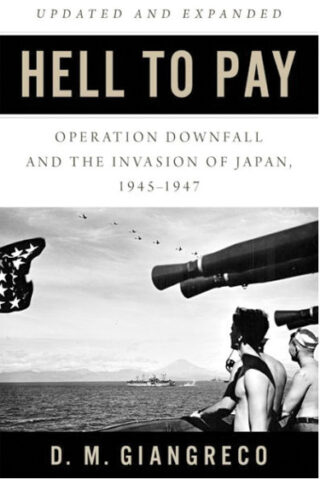 Night Duel Over Germany: Bomber Command’s Battle Over the Reich During WWII (Peter Jacobs, Pen and Sword Books, 2017, $39.95, hardcover) The RAF’s Bomber Command fought for almost six years against Nazi Germany. This chronicle lays out the history of that immense struggle.
Night Duel Over Germany: Bomber Command’s Battle Over the Reich During WWII (Peter Jacobs, Pen and Sword Books, 2017, $39.95, hardcover) The RAF’s Bomber Command fought for almost six years against Nazi Germany. This chronicle lays out the history of that immense struggle.
Stalag Luft III: An Official History of the “Great Escape” POW Camp (Frontline Books, 2017, $34.95, hardcover) The British War Office prepared an account of this infamous camp at the end of the war. Its findings are reprinted here along with photographs, diagrams, and charts.
British Battle Tanks: British-Made Tanks of World War II (David Fletcher, Osprey Publishing, 2017, $30.00, hardcover) This is a thorough examination of the myriad tank designs Great Britain produced during the war. It is superbly illustrated and includes variants and support vehicles.
The Boat That Won the War: An Illustrated History of the Higgins LCVP (Charles Roberts, Jr., Seaforth Publishing, 2017, $29.95, hardcover) The Higgins boat is credited as one of the most important innovations of the war. This analysis is full of period illustrations and construction drawings.
Operation Barbarossa 1941: Hitler Against Stalin (Christer Bergstrom, Casemate Publishing, 2017, $49.95, hardcover) Barbarossa was the largest land operation of the war. This coffee table book reveals the breadth and depth of the campaign.
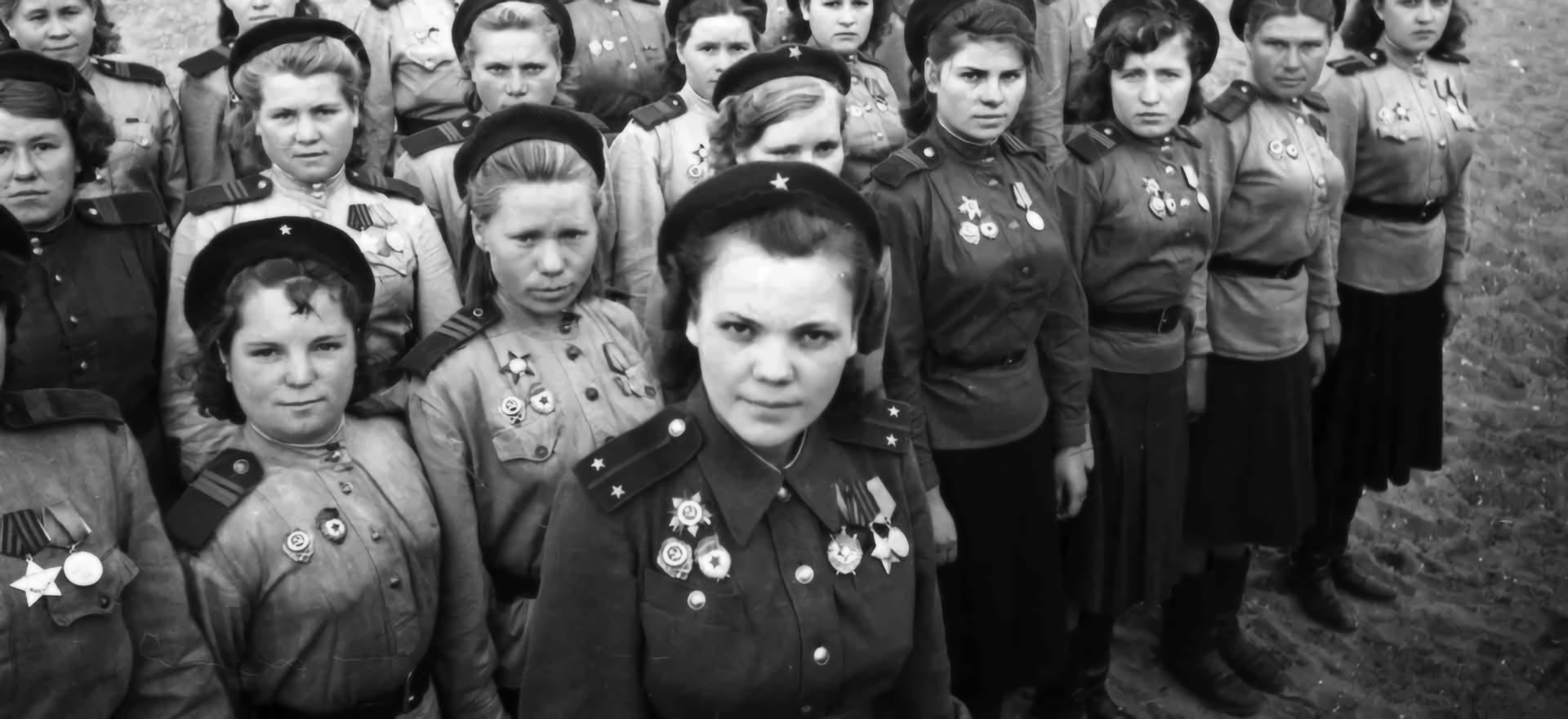
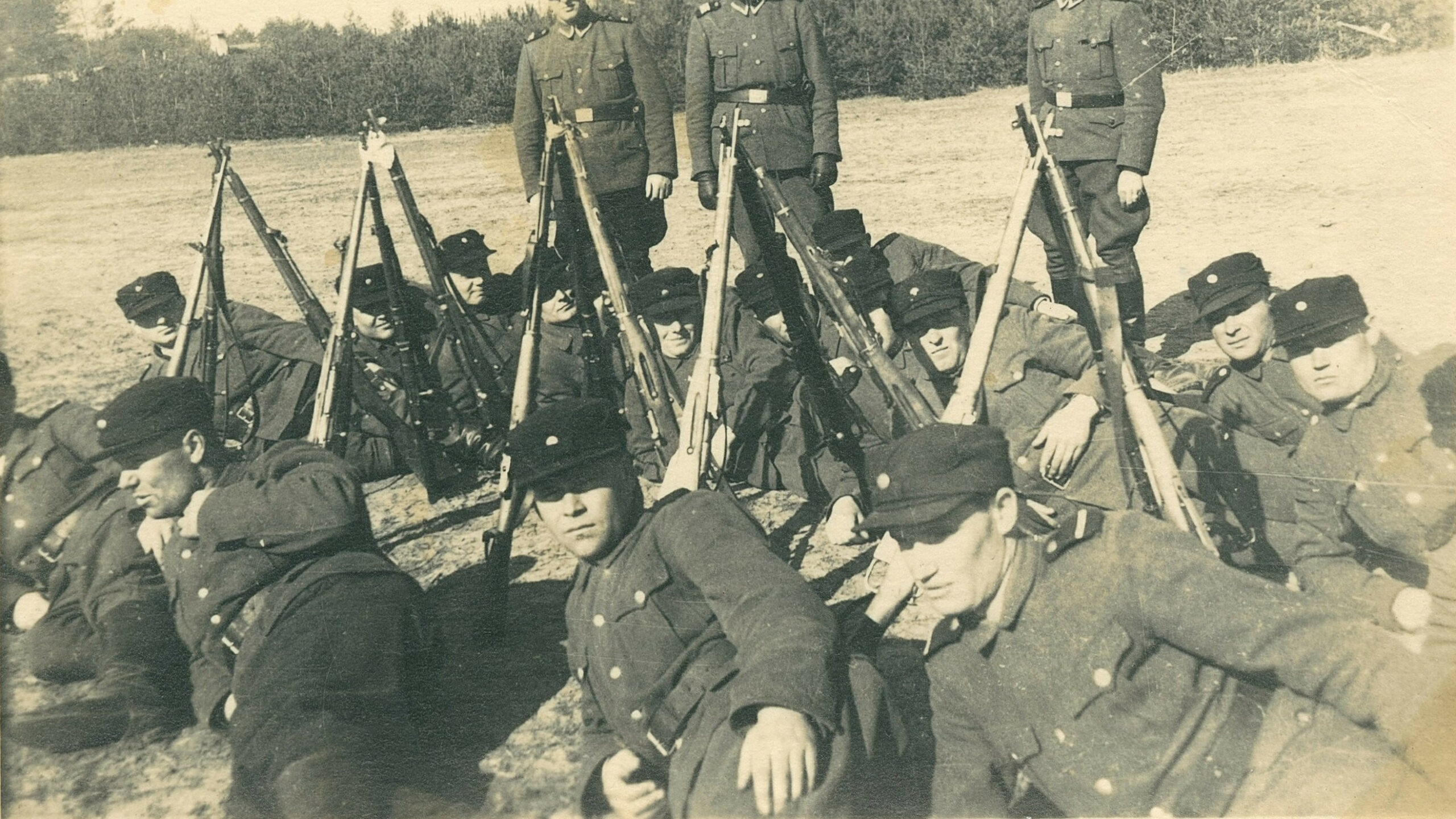
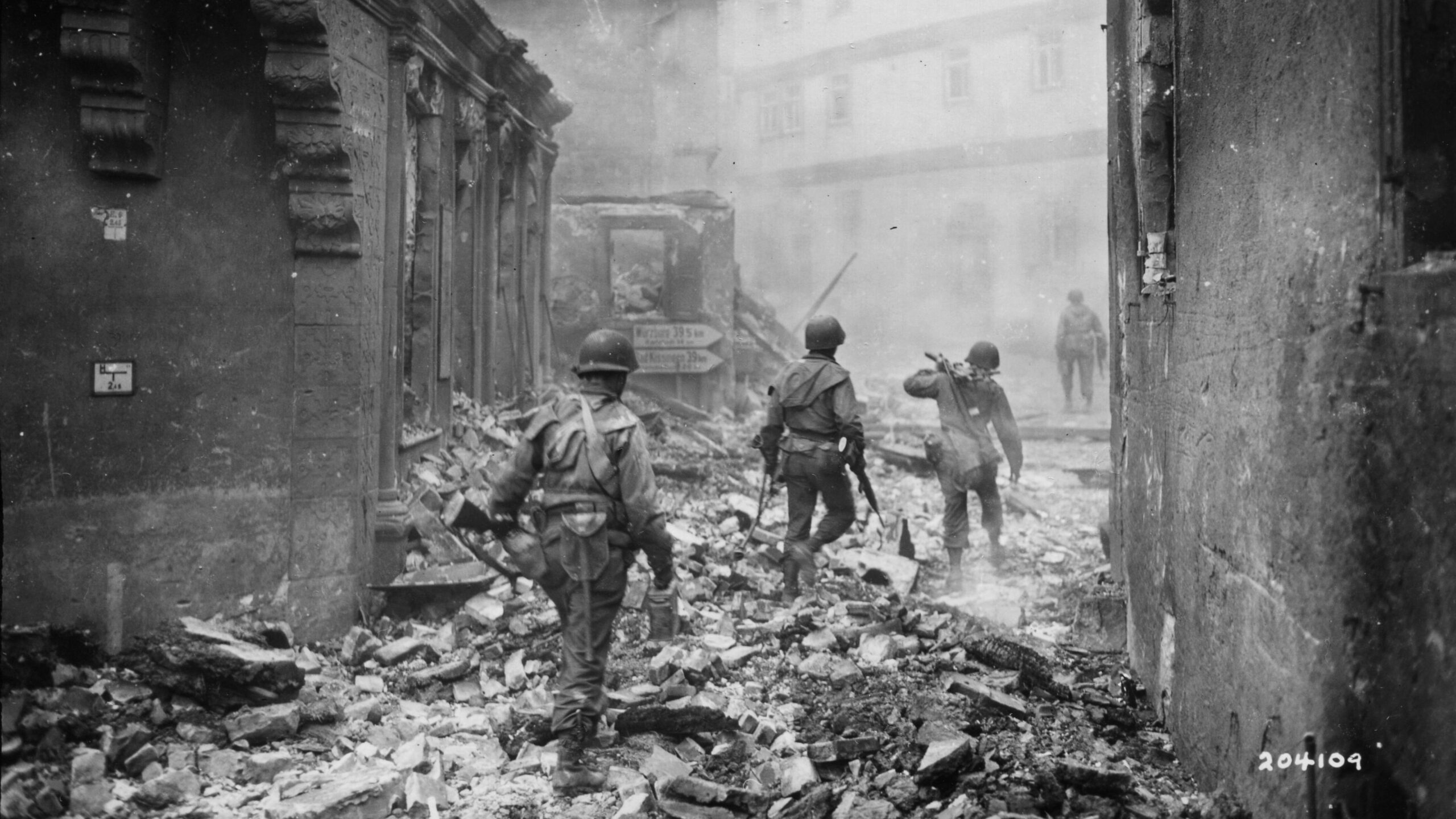
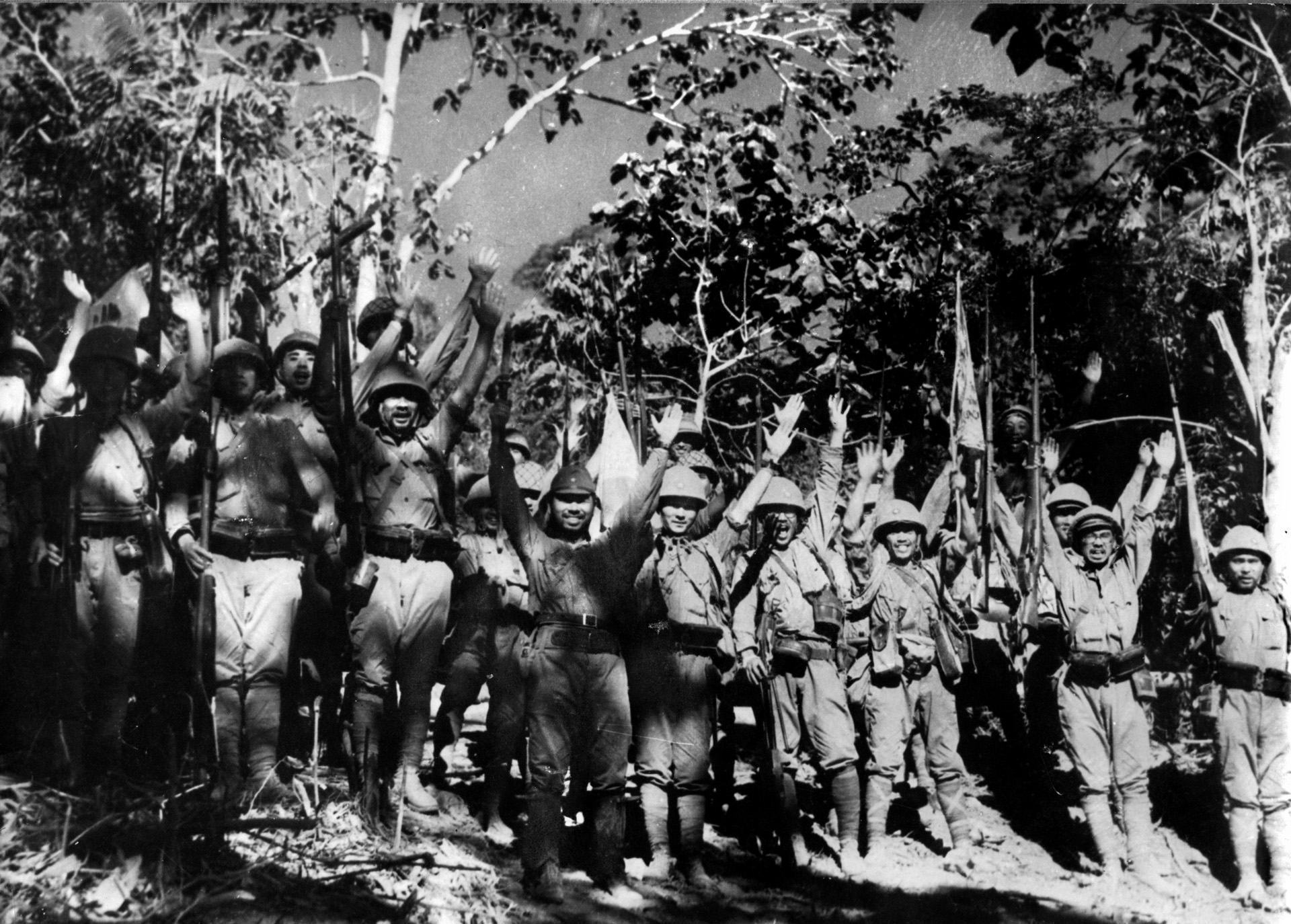
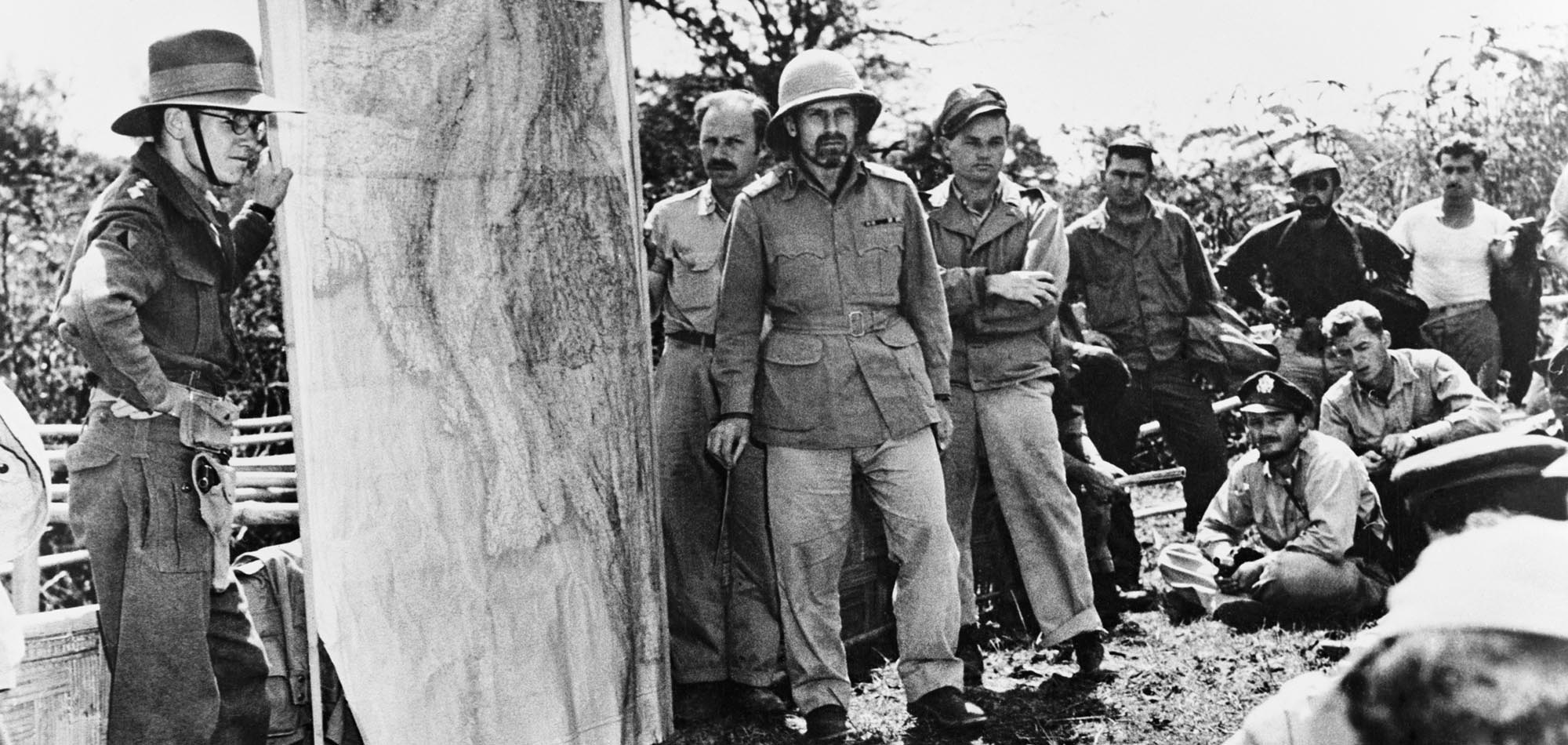
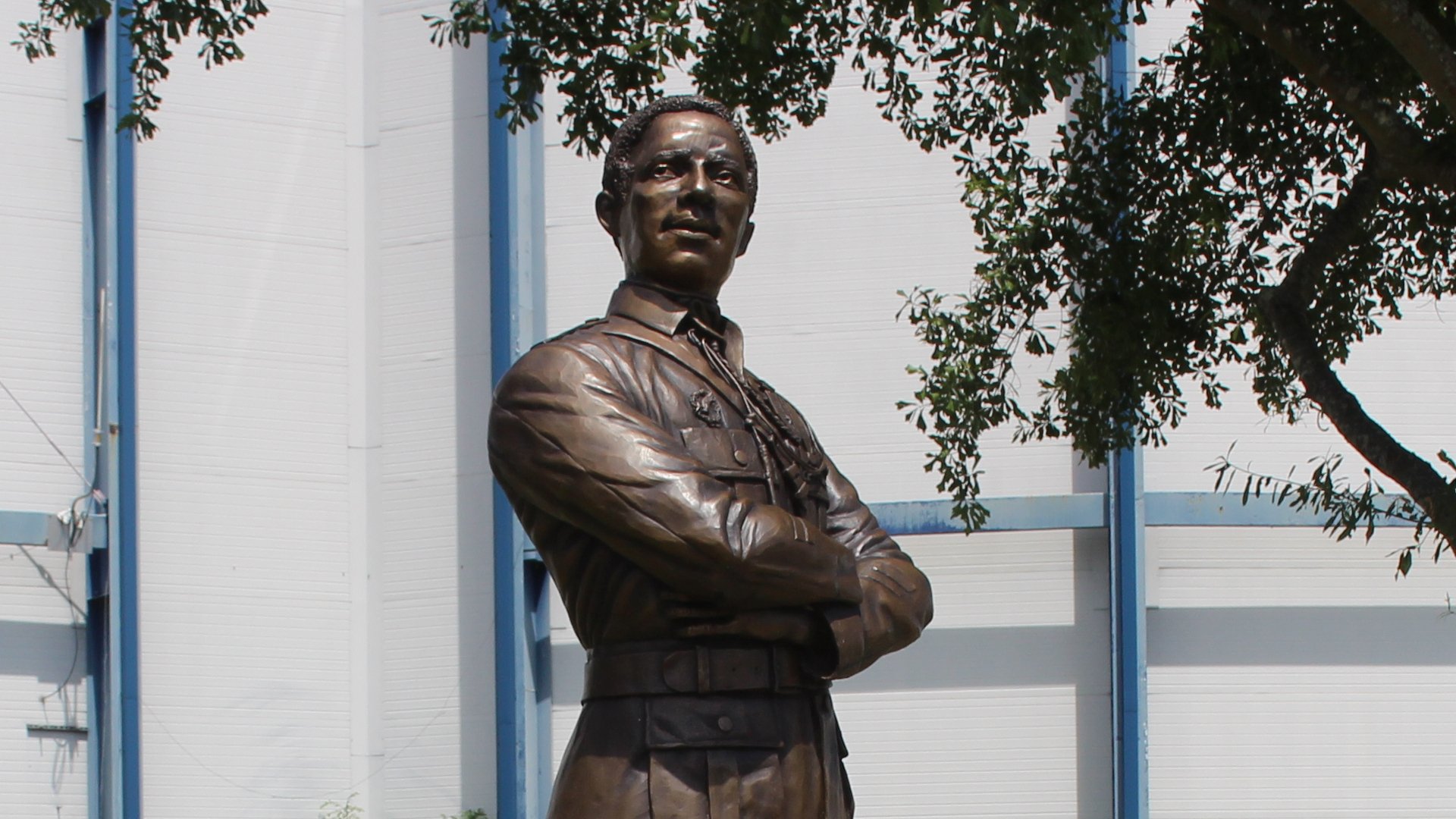
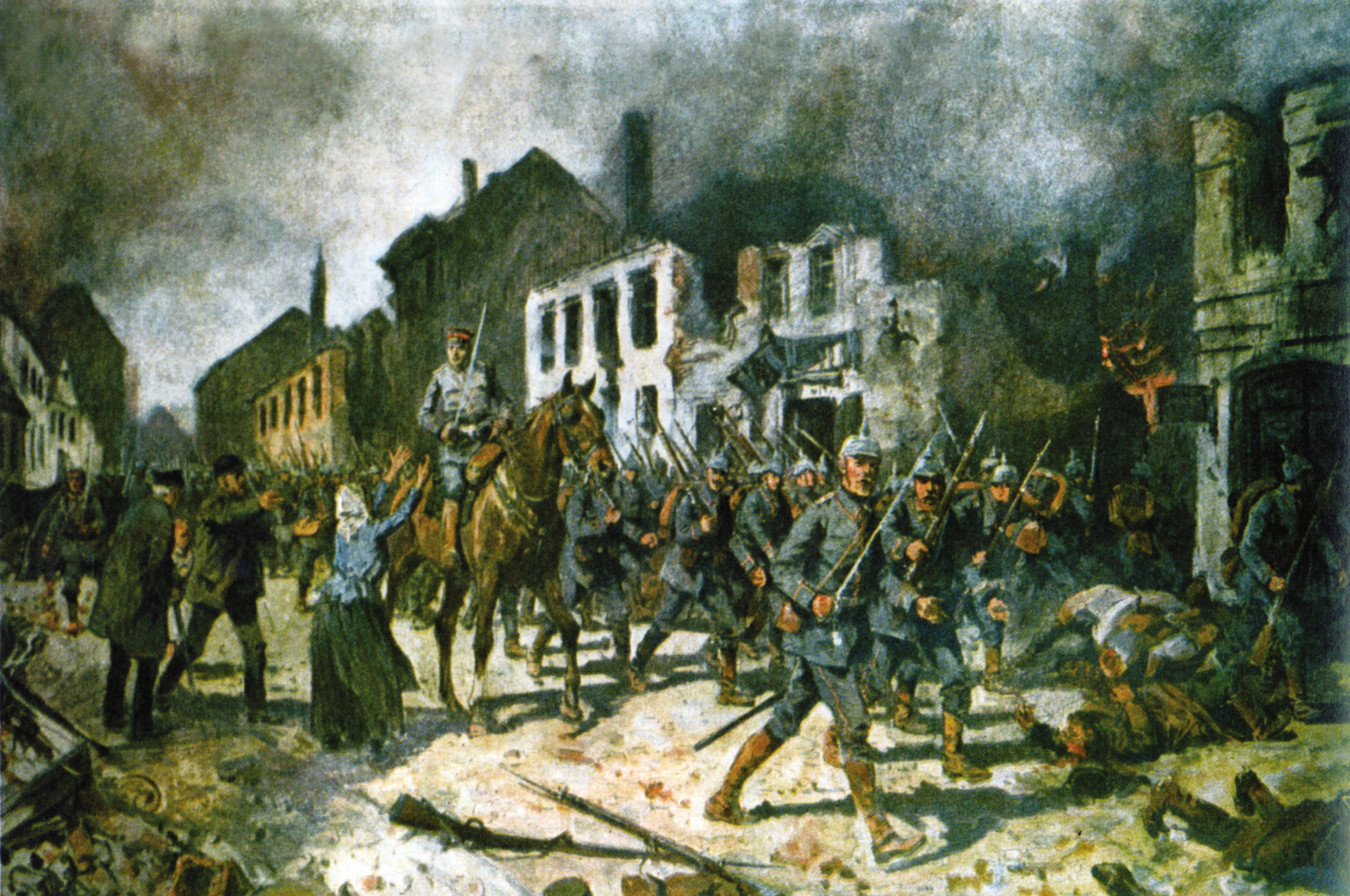
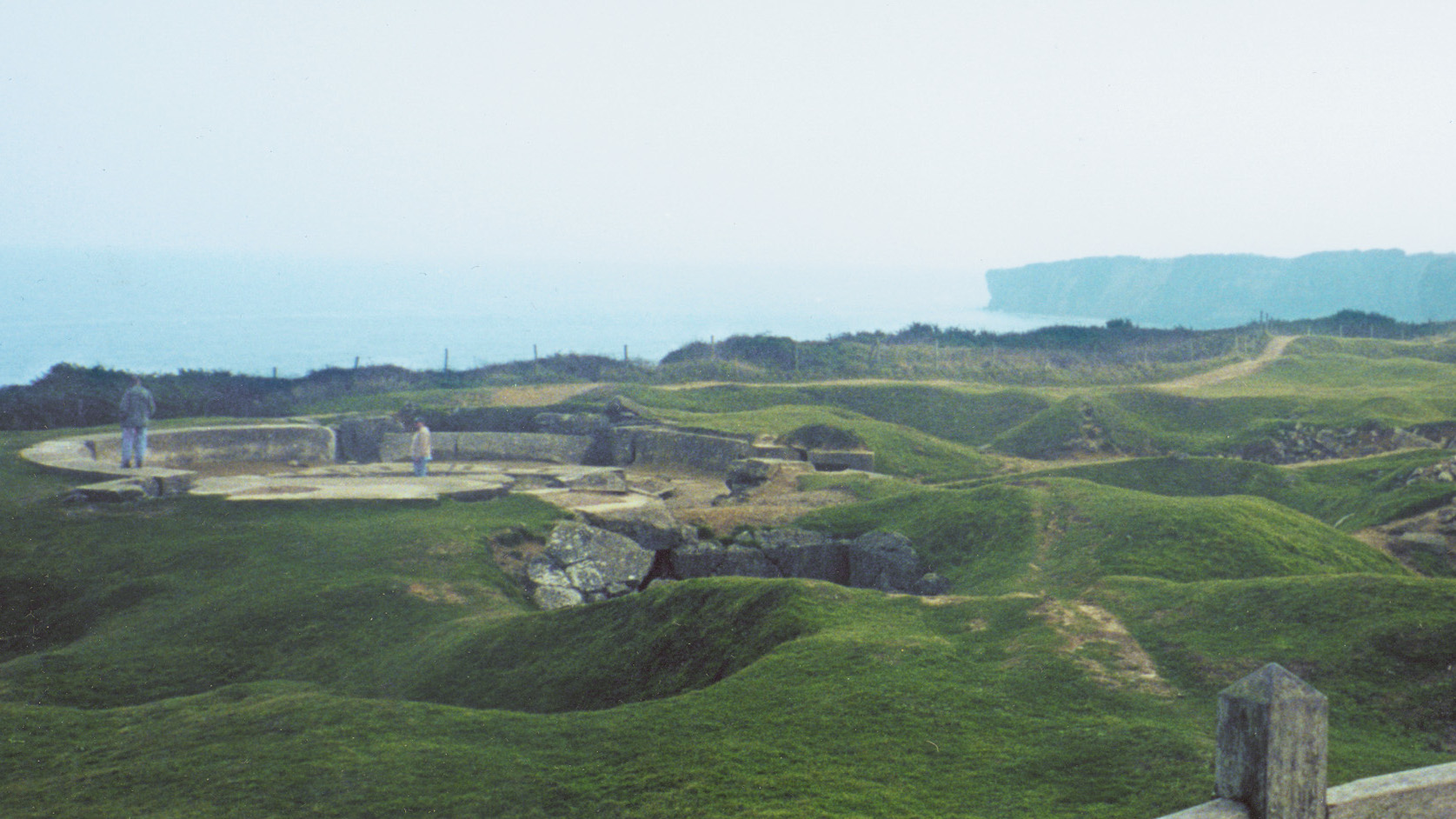
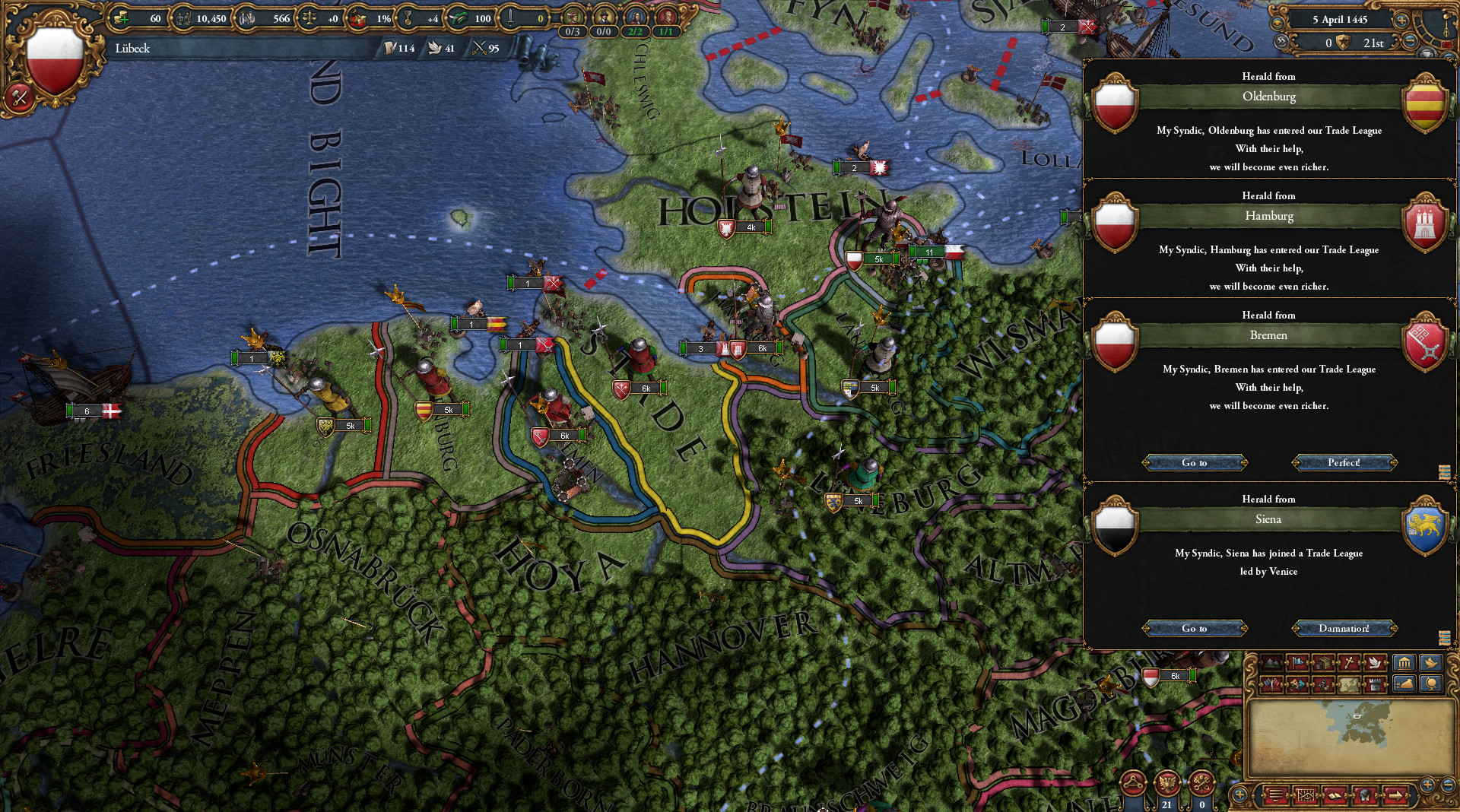
Join The Conversation
Comments
View All Comments